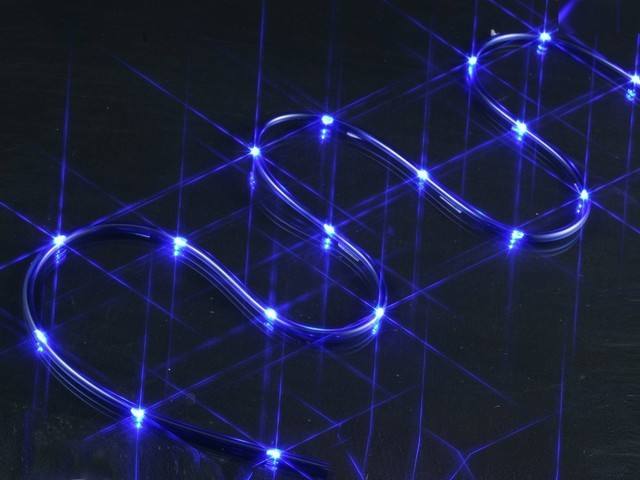Large-size TV market, Mini LED or have the opportunity to compete with OLED
According to the latest "New Display Technology Cost" report by LEDinside, the industry's hottest technology in the past two years is nothing more than Micro LED, the next generation of display technology that allows capital markets and upstream and downstream supply chains. The industry is looking forward to it; however, from a technical perspective, including the huge transfer rate and LED uniformity, the production of Micro LED seems to be difficult. Some manufacturers have temporarily shifted their development focus to the Mini LED. Since the structure of the Mini LED is similar to the current LCD or LED display, there is no major change in design. Commercialization is only a matter of time, so it is also placed by the manufacturer. High hope, hope that it can become a transition product before the production of Micro LED.

However, Mini LED is bound to face competition from OLED directly. Whether it is in consumer electronics such as mobile phones or TVs, consumers have gradually determined that OLED panels are equivalent to high-end products, plus OLED production stability and even future capacity. Both are more advantageous, so the market is constantly looking at what the Mini LED should target.
The technical advantages of Mini LED and OLEDOLEDs have the inherent advantages of self-luminous properties such as high color saturation (NTSC over 100%), high contrast (1,000,000:1), and fast response time (microsecond rating), plus flexible Imagine the space, allowing manufacturers to have greater flexibility in thickness or shape design. The Mini LED is used to shrink the chip size to 100-200 microns on the current LCD display architecture. The LED array is filled with LEDs in a matrix arrangement, which also emphasizes high contrast and has an ultra-high brightness of over 1000 nits. In addition, HDR through partition dimming is also one of the advantages of Mini LED.
Limited by the technical issues of cost and power consumption, it is not difficult for Mini LED to enter the mobile phone market.
However, the number of LEDs used in Mini LED products is very large. Take the 5.5-inch FHD screen as an example, and the number of LEDs used can range from 2,000 to 10,000. When the number of LEDs is small, a long optical distance is required, which increases the thickness of the whole machine; while the number of LEDs is large, the optical distance required for the backlight can be shortened and the uniformity is better, but the heat dissipation problem is derived and the cost is greatly increased.
Taking a 5.5-inch hard OLED panel as an example, the panel cost is about 17~18 dollars. If the same size and the same resolution are replaced with Mini LED backlight, the panel cost will fall to about 35~40 USD, which is close to the past OLED panel. "price". With the OLED production capacity no longer tight, there is price competition pressure from the LTPS panel, OLED smart phone panel offer is still relatively weak in the long run. Therefore, the key to the entry of the Mini LED into the mobile phone market depends on when its cost can approach the OLED.
Large-size TV market, Mini LED or have the opportunity to compete with OLEDAccording to the status of TV, because the printing and coloring technology of OLED is not mature, the material utilization rate of the current evaporation method is only 20~30%. If full color evaporation is used on TV, it will face production yield. As well as the problem of low material utilization rate, TVs are basically dominated by WOLEDs, which are yellow/green with blue light-emitting layers mixed into white light, and matched with color filters to achieve full color. Although this architecture still has advantages in comparison and thickness, if the performance of color saturation is used, the backlight of Mini LED and QD film has the same level as WOLED.
Taking the production cost of 65å‹ UHD as an example, the production cost is about 950~1000 US dollars; while the 65å‹UHD with Mini LED backlight is estimated by using 30,000~40,000 LEDs, the production cost is about 900~ 1,000. Since the current power consumption is not a priority for TV, and the cost is not too different from OLED, the Mini LED may have a chance. Recently, the first-line brands like Samsung Electronics and LGE have already demonstrated or announced There are plans to introduce large Mini LED TVs or commercial displays.
Cost is not a priority, Mini LED battles niche marketWhen the cost is not a priority, the chances of the device to introduce the Mini LED are much larger. From the beginning of the year, the group's 10.1 car display on CES and the 27-inch LCD monitor for esports displayed by AUO and 15.6å‹With regard to notebooks, 2 VR and other related devices, it can be seen that Mini LED technology has its space in the niche market where the unit price is relatively high.
Because IT products inevitably need to implement document processing, the residual image caused by the long static picture has caused OLED to suffer a lot. In addition, because of the OLED production capacity of Samsung display in 2016, most of the smart phone panels are preferred. Missed the opportunity to enter the IT market. In recent years, with the expansion of the e-sports market and the increasing value of production, various IT brands are also eager to launch e-sports products with high gross profit and high added value. In addition, PC monitors have already had HDR standards and powerful partitions of Mini LEDs. The dimming function has the opportunity to bring HDR to the fullest. Therefore, high-end IT products will be a market where a few Mini LEDs have the opportunity to compete with OLED stations on the same starting line.
Shenzhen Konchang Electronic Technology Co.,Ltd , https://www.konchangs.com